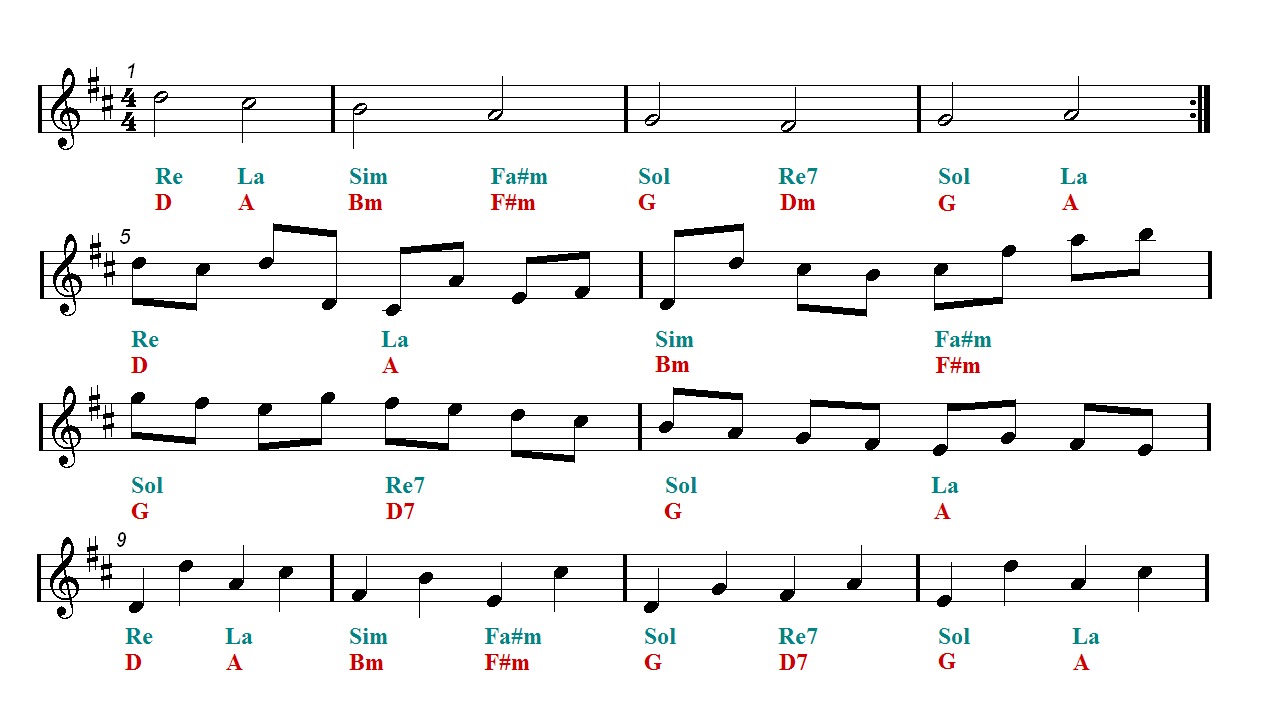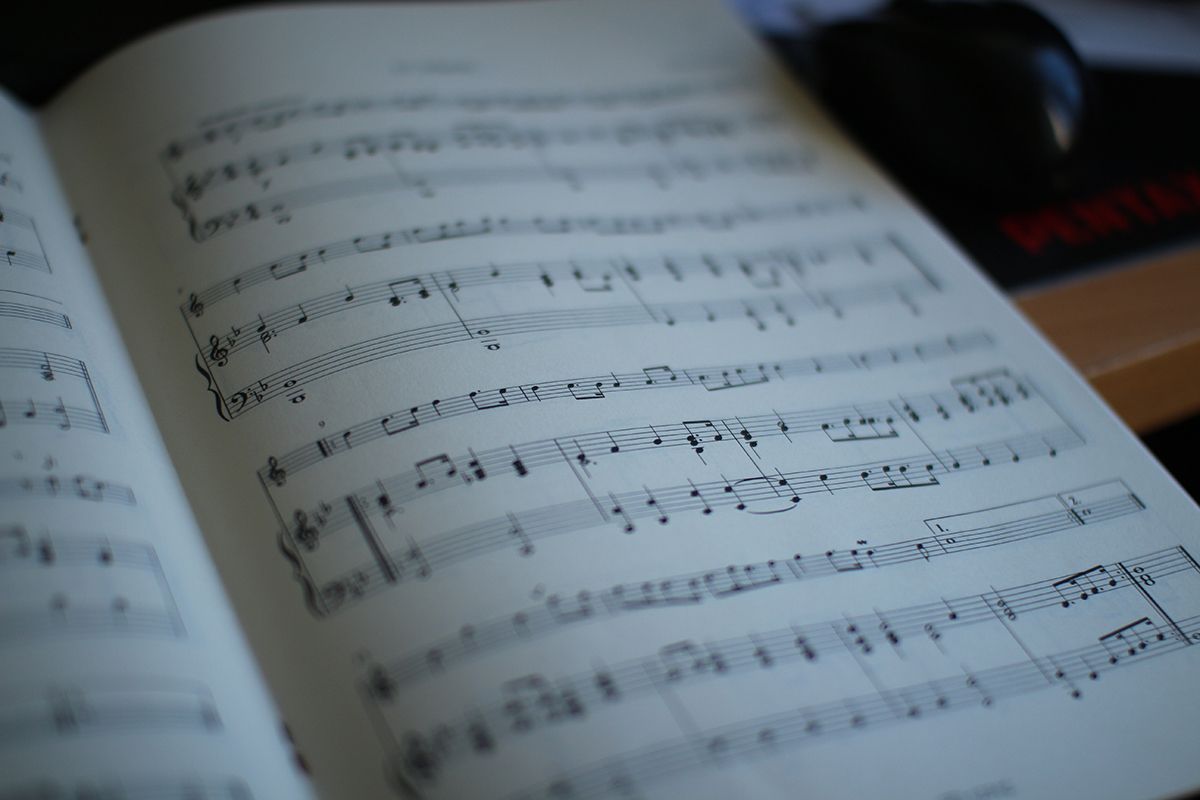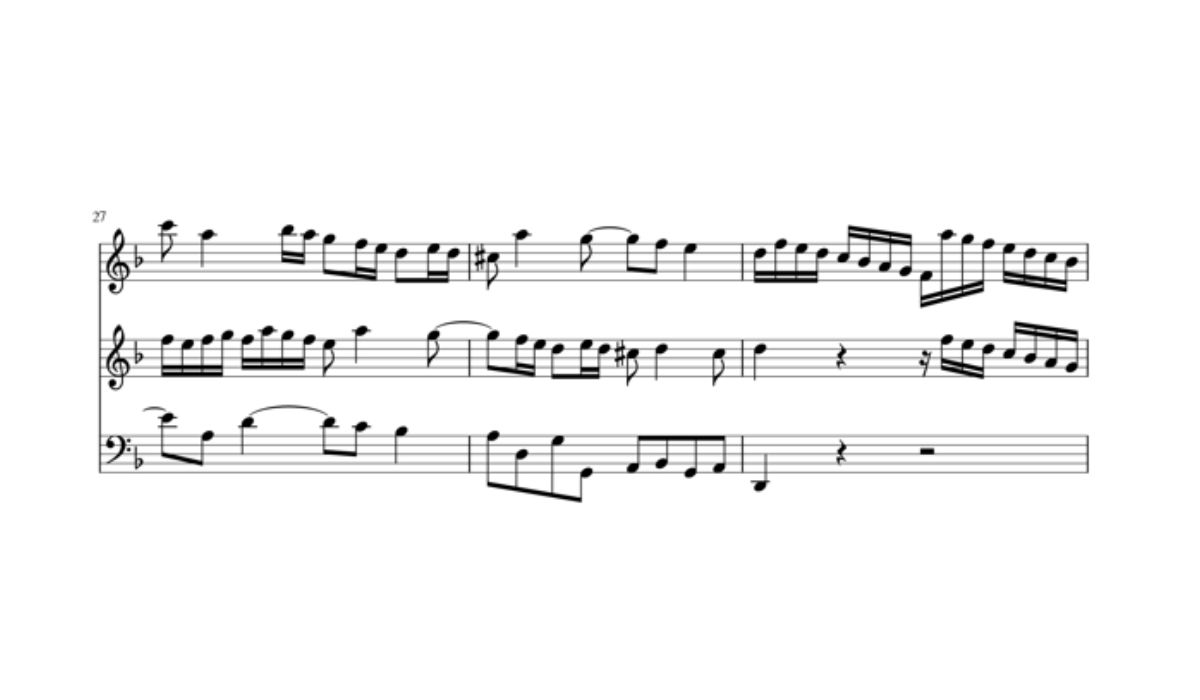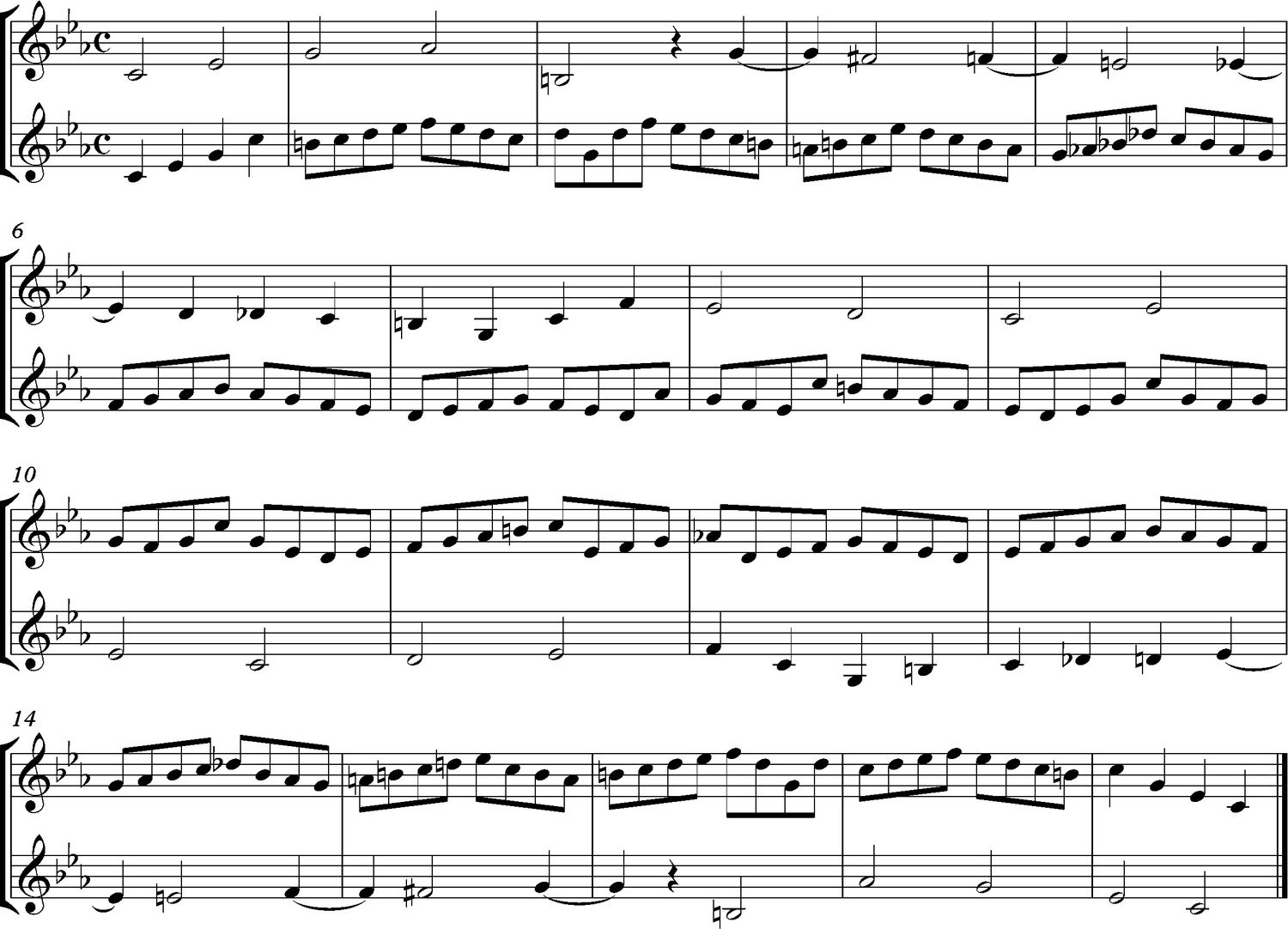Home>Production & Technology>Music Theory>What Is Set Class Music Theory
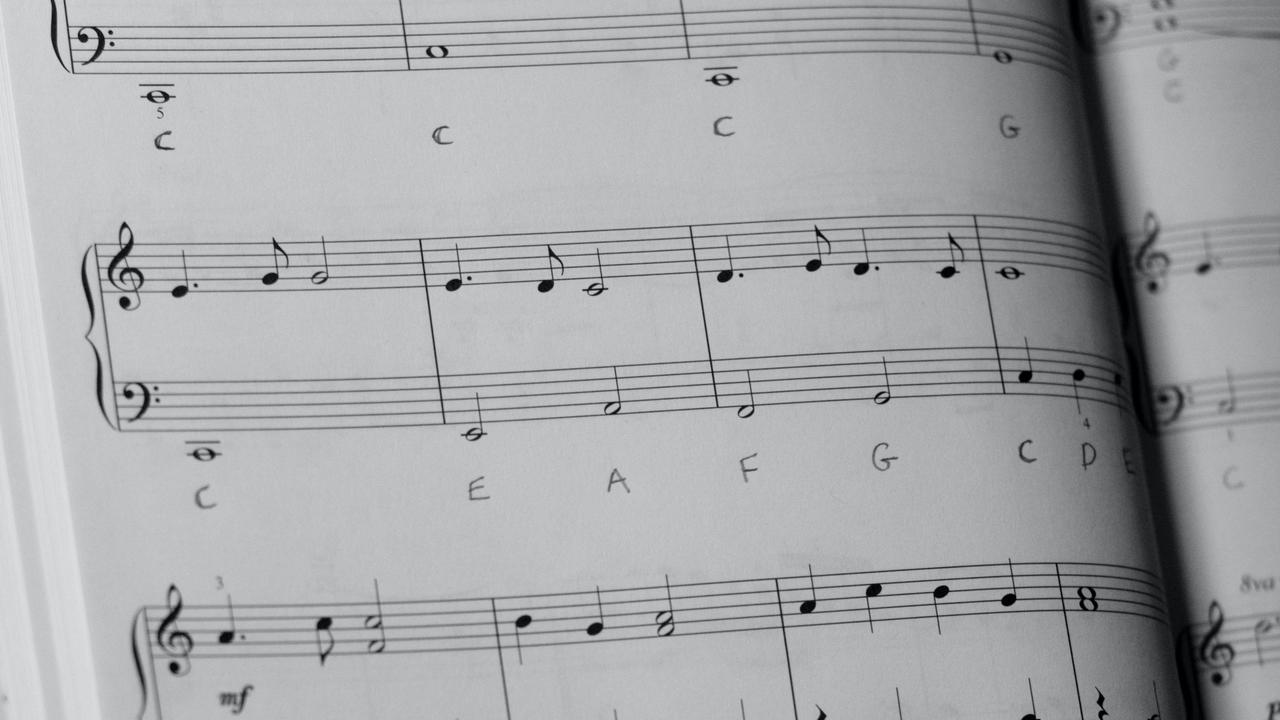

Music Theory
What Is Set Class Music Theory
Published: January 31, 2024
Learn what set class music theory is and how it relates to understanding the principles of music. Explore the concepts and applications of music theory in this comprehensive guide.
(Many of the links in this article redirect to a specific reviewed product. Your purchase of these products through affiliate links helps to generate commission for AudioLover.com, at no extra cost. Learn more)
Table of Contents
Introduction
Welcome to the fascinating world of music theory! At its core, music theory is the study of the structure and principles behind music. It helps us understand why certain musical combinations sound pleasing to our ears and how composers create harmony, melody, rhythm, and form.
Within the vast realm of music theory, there are various concepts and techniques that musicians and scholars delve into to gain a deeper understanding of music. One such concept is set class theory, which provides a way to analyze and categorize musical sets.
A set class, also known as pitch class set or tonal set, refers to a collection of pitch classes that share certain characteristics. These sets can be as small as two pitches or as large as all twelve pitch classes in the Western chromatic scale. Set class theory allows us to classify and compare these collections, providing insights into their distinctive qualities and relationships.
The study of set classes is particularly useful in contemporary and avant-garde music, where composers often experiment with unconventional harmonic structures and tonal systems. Understanding set classes helps us dissect and interpret the complex and unique tonalities found in these musical compositions.
In this article, we will explore the fundamental concepts of set class theory, including the definition of set class, set class interval vector, and operations on set classes. We will also examine examples of set classes in music theory and discuss their applications in music analysis.
Whether you are a musician, student, or music enthusiast, gaining knowledge of set class theory will broaden your understanding of music’s inner workings and provide a fresh perspective on the compositions you encounter. So, let’s dive into the world of set class music theory and discover the richness it brings to the study of music.
Definition of Set Class in Music Theory
In music theory, a set class refers to a collection of pitch classes that share specific musical characteristics. A pitch class represents a set of all pitches that share the same pitch class name, regardless of their octave. For example, C, C♯, and C♭ are all members of the same pitch class because they share the same name – C.
Set classes are essential for the analysis and understanding of musical structures. They allow us to categorize and compare different collections of pitches, providing a framework for identifying patterns, relationships, and tonalities.
A set class is defined using set notation, where the pitch classes are represented by numbers. For example, the set class {0, 4, 7} refers to a collection of pitch classes represented by the intervals of a perfect prime (0), a major third (4), and a perfect fifth (7).
It is important to note that set classes are often represented in their prime form, which means they are arranged in ascending order and their transpositional and inversional equivalents are eliminated. This ensures that we focus on the essential characteristics of the set class without redundancy.
For example, the set class {0, 9, 3} is converted to its prime form {0, 3, 9} since it is a transposition of the original set class. Similarly, the inversion of the set class {0, 4, 7} would be {0, 5, 8}, but we represent it in its prime form {0, 3, 8}.
Set classes can vary in size and complexity. They can range from two-pitch sets, known as dyads, to sets that encompass all twelve pitch classes, known as aggregate or total serial sets.
The concepts of set classes provide a fundamental framework for music theorists and analysts to study and interpret the structure, relationships, and harmonic properties of different musical compositions. By examining the set classes present in a piece of music, we can uncover underlying patterns and gain insights into the composer’s intentions and artistic choices.
Now that we have a clear understanding of the definition of set class in music theory, let’s explore further and delve into the concept of set class interval vectors and the operations performed on set classes.
Set Class Interval Vector
In music theory, the set class interval vector is a valuable tool used to analyze and compare the interval content of different set classes. It provides a concise representation of the intervals present within a set class, allowing for a quantitative assessment of its harmonic characteristics.
The set class interval vector consists of a sequence of six numbers, each representing the number of occurrences of a particular interval class in the set class. Interval classes are the equivalents of intervals in set class theory, where any interval of a certain number of semitones is considered the same regardless of direction or inversion.
The six numbers in the interval vector correspond to the interval classes defined as follows:
- 0 semitones (unison)
- 1 semitone (minor second)
- 2 semitones (major second)
- 3 semitones (minor third)
- 4 semitones (major third)
- 5+ semitones (tritone or any larger interval)
These numbers represent the count or frequency of occurrence of each interval class within a given set class. For example, the interval vector [2 1 3 0 0 1] denotes a set class with two unisons, one minor second, three minor thirds, and one tritone.
The set class interval vector provides valuable information about the harmonic content and structural characteristics of a set class. By comparing the interval vectors of different set classes, we can identify similarities, differences, and relationships between musical collections.
It is worth noting that the interval vectors are invariant under transposition and inversion. This means that transposing or inverting a set class will not alter its interval vector. Therefore, the interval vector serves as a reliable metric for comparing set classes, regardless of their tonal or pitch content.
With the set class interval vector, music theorists and analysts can quantitatively examine the intervallic relationships within a composition, uncover recurring patterns, and gain insights into the composer’s harmonic choices and structural design.
Now that we have covered the concept of set class interval vectors, let’s explore the various operations performed on set classes that further enhance our understanding of their properties and relationships.
Operations on Set Classes
In music theory, various operations can be performed on set classes to analyze their properties and relationships. These operations include inversion, transposition, ordering, and cardinality. Understanding these operations allows us to explore the transformations and manipulations of set classes, providing valuable insights into their structures and characteristics.
Set Class Inversion
The inversion of a set class involves reversing the order of its pitch classes. This means that the lowest pitch class becomes the highest, and vice versa, while maintaining the intervals between pitch classes. For example, the inversion of the set class {0, 4, 7} would be {0, 5, 8}, where the perfect prime interval (0) becomes a perfect octave (0), the major third (4) becomes a minor sixth (5), and the perfect fifth (7) becomes a major second (8).
Set class inversion helps reveal symmetry and harmonic relationships within a composition. By comparing the original set class with its inversion, we can identify commonalities and explore the musical implications of these transformations.
Set Class Transposition
Transposition involves shifting all pitch classes in a set class by a fixed interval. This operation maintains the same interval structure within the set class. For example, transposing the set class {0, 4, 7} up by a major second would result in {2, 6, 9}, where each pitch class is raised by two semitones.
Transposition allows us to explore the relationship between different tonalities and analyze the harmonic progression within a composition. By examining transpositions of a set class, we can identify patterns, repetitions, and tonal centers.
Set Class Ordering and Cardinality
Set classes can also be ordered based on the pitch class values. The ordering of a set class ensures consistency and eliminates duplicates, enabling a standardized representation. For example, the set class {4, 0, 7} would be ordered as {0, 4, 7}.
The cardinality of a set class refers to the number of pitch classes within the set. For example, a set class with three pitch classes, such as {0, 4, 7}, has a cardinality of three.
Ordering and cardinality allow for a systematic approach to analyzing and categorizing set classes. By applying these concepts, we can identify similarities, differences, and relationships between sets, contributing to our understanding of musical structures and compositions.
These operations provide valuable tools for music theorists and analysts to study, compare, and interpret the properties and relationships of set classes. By applying these operations to different musical collections, we can uncover hidden patterns, explore harmonic transformations, and gain a deeper understanding of the structural elements present in a composition.
Now that we have explored the operations performed on set classes, let’s explore some examples of set classes in music theory to further solidify our understanding.
Set Class Inversion
Set class inversion is an operation in music theory that involves reversing the order of the pitch classes within a set. This transformation maintains the intervallic structure of the original set class while altering the order of the pitches. By inverting a set class, we gain insights into its symmetrical properties and explore harmonic relationships within a composition.
To understand set class inversion, let’s consider an example. Take the set class {0, 4, 7}, which represents a C major triad. Inverting this set class results in {0, 5, 8}. We can see that the original set class’s perfect prime interval (0) becomes a perfect octave (0), the major third (4) becomes a minor sixth (5), and the perfect fifth (7) becomes a major second (8).
The process of set class inversion allows us to identify symmetries within a composition. For example, a set class and its inversion may both appear within a composition, creating a palindromic effect. Inverting a set class can also reveal hidden relationships between different sections or motifs in a musical piece.
Set class inversion serves as a valuable tool for composers, theorists, and analysts. It offers a fresh perspective on the tonal and structural aspects of a composition. By examining the inversion of set classes, we can gain insights into the composer’s intentional use of symmetry, dissonance, or tonal contrast within their music.
Moreover, the concept of inversion extends beyond pitch classes. It can also be applied to rhythm, melodic motifs, and harmonic progressions. Inversion allows composers to create variation and contrast within their compositions while maintaining a coherent and cohesive musical language.
In summary, set class inversion is a crucial operation in music theory that involves reversing the order of pitch classes within a set. It helps us uncover symmetrical properties and harmonic relationships within a composition. By exploring the inversion of set classes, we can deepen our understanding of the structural elements and tonal complexities present in a piece of music.
With this understanding of set class inversion, let’s move on to explore the concept of set class transposition.
Set Class Transposition
In music theory, set class transposition refers to the process of shifting the pitch classes in a set class by a fixed interval. This operation allows us to explore the relationship between different tonalities and analyze the harmonic progression within a composition.
To understand set class transposition, let’s consider an example. Take the set class {0, 4, 7}, which represents a C major triad. If we transpose this set class up by a major second, the resulting set class will be {2, 6, 9}. Each pitch class in the set has been raised by two semitones.
Set class transposition serves as a valuable tool for composers and music theorists to explore tonal relationships and harmonic movement within a composition. By applying transposition to set classes, we can identify patterns, repetitions, and tonal centers.
Transposing a set class can reveal the underlying structure and tonal progressions within a composition. By analyzing the transpositions of a set class, we can uncover musical motifs, chord progressions, and overall tonalities employed by the composer. Transposition can also help identify tonal relationships between different sections or movements in a larger musical work.
It is important to note that set class transposition does not alter the intervallic structure of a set class. The relationships between the pitch classes remain the same, only their pitch levels change. This allows for a consistent analysis and comparison of set classes across different tonal contexts.
Set class transposition is a versatile tool that can be used not only for pitch class sets but also for rhythmic motifs, melodic phrases, and harmonic progressions. By applying transposition to various musical elements, composers can create variations and explore different tonal possibilities within a composition.
In summary, set class transposition is a fundamental operation in music theory that involves shifting the pitch classes within a set class by a fixed interval. It helps us explore tonal relationships, identify patterns, and analyze harmonic progressions within a composition. By applying transposition to set classes, composers and theorists gain valuable insights into the structural elements and tonal developments present in a piece of music.
Now that we have a clear understanding of set class transposition, let’s move on to exploring the concepts of set class ordering and cardinality.
Set Class Ordering and Cardinality
In music theory, set class ordering and cardinality are important concepts used to analyze and categorize set classes based on their pitch class values.
Set Class Ordering
Set class ordering involves arranging the pitch classes within a set class in ascending or descending order. This process eliminates duplicates and establishes a standardized representation for the set. For example, the set class {4, 0, 7} would be ordered as {0, 4, 7}.
Ordering set classes allows for consistency and easier comparison between different musical collections. By representing set classes in a standardized order, music theorists and analysts can identify similarities, differences, and relationships more efficiently.
Set Class Cardinality
Set class cardinality refers to the number of distinct pitch classes within a set. It provides a quantitative measure of the size or complexity of a set class. For example, a set class with three pitch classes, such as {0, 4, 7}, has a cardinality of three.
The cardinality of a set class is a fundamental characteristic that helps classify and categorize set classes. It allows for the identification of specific types of set classes, such as dyads (cardinality of two) or tetrads (cardinality of four), each with their own unique characteristics and harmonic implications.
By considering the ordering and cardinality of set classes, music theorists and analysts can systematically analyze and dissect musical structures. These concepts assist in the identification of recurring patterns, relationships, and tonal centers within a composition.
Furthermore, set class ordering and cardinality are vital for comparing and contrasting different musical collections. They provide a consistent framework to study and interpret the pitch-class content and structural elements of a composition.
It is important to note that set class ordering and cardinality are invariant under transposition and inversion. This means that even after applying these operations, the relative order and the number of pitch classes in a set class will remain the same. This property enables a reliable and consistent analysis of set classes across different tonal contexts.
In summary, set class ordering and cardinality are key concepts in music theory used to analyze and categorize set classes. Ordering helps establish a standardized representation, while cardinality quantifies the size and complexity of a set class. By considering these characteristics, music theorists and analysts can analyze and compare musical structures, identify tonal relationships, and gain insights into the harmonic characteristics of a composition.
Now that we have explored the concepts of set class ordering and cardinality, let’s move on to examining examples of set classes in music theory.
Examples of Set Classes in Music Theory
In music theory, set classes provide a way to categorize and analyze collections of pitch classes. These set classes range from simple dyads (two-pitch sets) to more complex hexachords (six-pitch sets). In this section, we will explore a few examples of set classes and their significance in music theory.
One of the most well-known set classes is the pitch class set {0, 4, 7}, often referred to as the major triad. This set class represents the foundation of tonal harmony and is frequently used in Western classical, pop, and popular music genres. Its distinctive structure consisting of a perfect prime (0), major third (4), and perfect fifth (7) results in a rich and consonant sound.
Another example is the whole-tone scale, represented by the set class {0, 2, 4, 6, 8, 10}. This collection comprises six pitch classes separated by whole-tone intervals, creating a sense of tonal ambiguity and a dreamy, mysterious quality. The whole-tone scale has been famously employed by composers like Claude Debussy and Maurice Ravel to evoke otherworldly and surreal atmospheres in their compositions.
The set class {0, 1, 4, 7, 8}, known as a pentachord, is a five-pitch class set that is common in jazz and contemporary music. It combines a chromatic scale with a major third interval, resulting in an intriguing and dissonant sound. This set class has been utilized by jazz musicians and composers to create tension and instability within harmonic progressions.
Set classes can also extend beyond traditional tonality. For instance, the set class {0, 1, 3, 4, 6, 7, 9, 10} represents the chromatic octatonic scale. This eight-pitch class set alternates between half-step and whole-step intervals, creating an unsettling and mysterious tonal palette. The octatonic scale has been a prominent component in the works of many 20th-century composers, including Igor Stravinsky and Béla Bartók.
These examples are just a glimpse into the vast variety of set classes explored in music theory. Set classes encompass a wide range of chromatic combinations, allowing composers to create unique tonalities and explore new musical territories. By analyzing set classes, music theorists and analysts can gain insights into the harmonic structures, tonal centers, and overall aesthetic of a composition.
Now that we have explored these examples of set classes, let’s delve into the applications of set class theory in music analysis.
Applications of Set Class Theory in Music Analysis
Set class theory plays a crucial role in music analysis, allowing for the systematic examination and interpretation of musical structures. By applying set class theory, music theorists and analysts can uncover underlying patterns, relationships, and tonalities within compositions. Let’s explore some of the key applications of set class theory in music analysis.
Harmonic Analysis
Set class theory provides a powerful framework for analyzing harmonic structures in music. By identifying and analyzing the set classes present in a composition, music theorists can uncover the tonal relationships, observe recurring harmonic patterns, and gain insights into the composer’s harmonic choices. This analysis helps deepen our understanding of the piece’s overall tonality, chord progressions, and harmonic complexity.
Comparative Analysis
Set class theory enables music theorists to compare and contrast different musical passages, sections, or compositions. By examining the set classes used in various musical contexts, analysts can identify similarities, recurring motifs, or tonal transformations. This comparative analysis sheds light on the compositional techniques employed by the composer and enhances our understanding of the structural and tonal aspects of the music.
Identification of Musical Motifs
Set class theory is useful in identifying and analyzing recurring musical motifs or melodic patterns within a composition. By examining the set classes present in different passages or sections of a piece, analysts can identify commonalities and track the development and transformation of musical ideas. This analysis contributes to our understanding of the piece’s form, motivic development, and overall coherence.
Exploring Atonal and Contemporary Music
Set class theory is particularly valuable in analyzing atonal and contemporary music, where traditional tonal structures may not apply. By examining the set classes used in these compositions, music theorists can explore the unconventional harmonic structures, interval relationships, and tonal implications. This analysis sheds light on the unique tonalities and structures employed by composers in these genres, deepening our appreciation for their artistic choices.
Composition and Arrangement
Set class theory also serves as a valuable tool for composers and arrangers. By applying set class analysis, composers can explore different harmonic possibilities, experiment with unconventional tonalities, and create intricate and unique musical textures. Set class theory provides a systematic approach to crafting harmonic progressions, identifying dissonant or consonant combinations, and achieving specific tonal effects in compositions and arrangements.
In summary, set class theory finds numerous applications in music analysis. It facilitates harmonic analysis, comparative analysis, identification of musical motifs, exploration of atonal and contemporary music, and aids in composition and arrangement. By employing set class theory, music theorists and analysts can unravel the complexities of musical structures, providing deeper insights into the artistic choices and intentions of composers.
Now that we have explored the applications of set class theory in music analysis, let’s conclude our exploration of this fascinating topic.
Conclusion
Set class theory is an invaluable tool in music theory and analysis. By providing a systematic framework for categorizing, comparing, and analyzing collections of pitch classes, set class theory enhances our understanding of musical structures, tonal relationships, and harmonic complexities.
In this article, we have explored the definition of set class in music theory, understanding how set classes are defined using pitch classes and set notation. We have also examined the significance of the set class interval vector, which allows for a quantitative analysis and comparison of the intervals within a set class.
Furthermore, we have delved into the various operations performed on set classes, including inversion, transposition, ordering, and cardinality. These operations enable us to explore the symmetries, tonal shifts, and structural transformations within musical compositions.
Throughout our exploration, we have seen examples of set classes in music theory, ranging from the familiar major triad to more complex collections used in contemporary and avant-garde compositions. We have also discussed the applications of set class theory in music analysis, including harmonic analysis, comparative analysis, identification of motifs, analysis of atonal and contemporary music, and its use in composition and arrangement.
By incorporating set class theory into our analysis, we are able to uncover hidden patterns, unveil harmonic relationships, and gain deeper insights into the tonal and structural elements of a piece of music.
Set class theory not only enhances our understanding of existing musical compositions but also provides a powerful tool for composers, theorists, and analysts to explore new tonal possibilities, experiment with unconventional harmonic structures, and create unique musical textures.
As we conclude our exploration of set class theory, it is evident that this field of study continues to shape our understanding of music and contributes to the rich tapestry of musical analysis and composition.
So, whether you are a musician, student, or music enthusiast, embracing set class theory will undoubtedly enhance your appreciation and comprehension of the intricate and captivating world of music theory.


